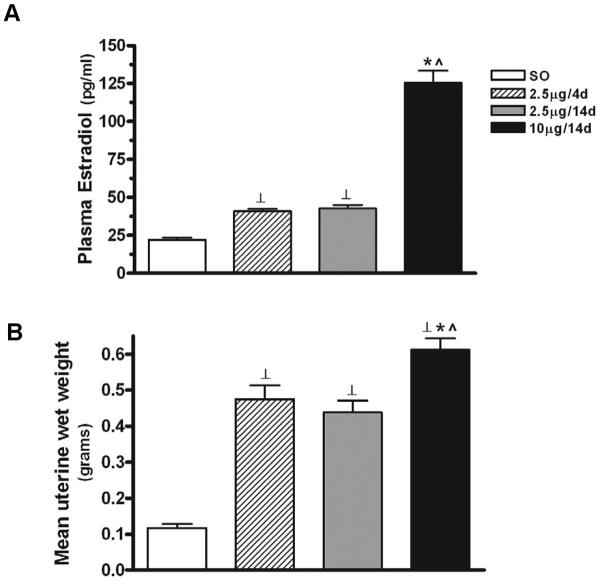Figure 1.
Comparison of mean plasma estradiol levels and uterine wet weights following different E regimens. (A) All E treatments had a significant effect on plasma estradiol levels (F3,72=126.84, P<0.0001). The regimens of 2.5μg/4d and 2.5μg/14d showed no differences in estradiol levels, but both regimens resulted in levels that were significantly higher than that seen with SO (P<0.01). Ten μg E for 14 days resulted in estradiol levels that were higher than that seen with SO (P<0.0001) and 2.5μg/4d or 2.5μg/14d (P<0.0001). Results are expressed as mean±S.E.M. ⊥: P<0.01; *: P<0.0001, compared with SO; ^: P<0.0001, compared with 2.5μg/4d and 2.5μg/14d. (B) Quantitative analysis revealed that all of the E regimens showed a greater mean uterine wet weight than sesame oil alone (F3, 14=44.05, P<0.0001). Both 2.5μg/4d and 2.5μg/14d regimens resulted in greater uterine wet weight than SO (P<0.001 in both cases). The regimen of 10μg/14d resulted in greater uterine weight than either the regimes of SO (P<0.001), 2.5μg/4d (P<0.05) and 2.5μg/14d (P<0.01). Results are expressed as mean±S.E.M. ⊥: P<0.001, compared with SO; *: P<0.05, compared with 2.5μg/4d; ^: P<0.01 compared with 2.5μg/14d.

